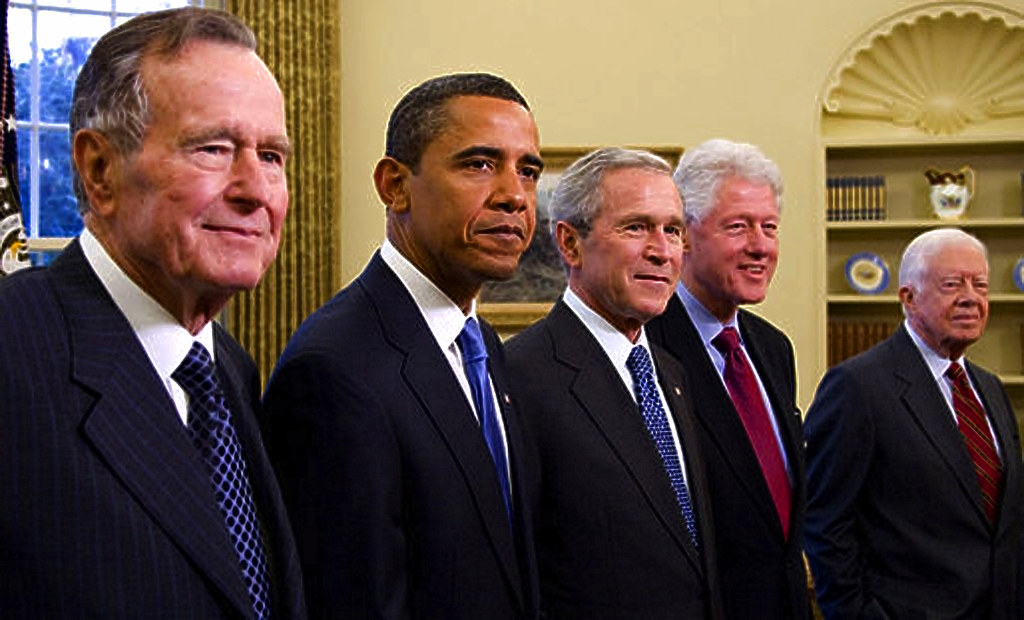A review of Obama’s many successes in office explains why conservatives, to include two Reaganites, are heaping praise on his accomplishments.
Obama’s second term record helps cement his place in history drawing praise from mainstay conservative establishment websites such as Forbes along with that of two Reaganites – one a former adviser and the other, the Director of the Reagan Presidential Library.
In 2013, Forbes interviewed Bob Deitrick, co-Author “Bulls, Bears and the Ballot Box,” which ranked United States presidents from 1929 through 2009 (Herbert Hoover through George W. Bush) looking at 12 economic factors such as “the deficit, months in recession and stock market performance.”
Asked how much credit Americans should give Pres. Obama for improved economic performance, Deitrick responded:
Our research reviewed American economic performance since President Roosevelt installed the first Federal Reserve Board Chairman – Republican Marriner Eccles. We observed that even though there are multiple impacts on the economy, it was clear that policy decisions within each administration, from FDR forward, made a clear difference on performance. And relatively quickly.
Presidents universally take credit when the economy does well (such as Reagan,) and choose to blame other factors when the economy does poorly (such as Carter.) But there was a clear pattern, and link, between policy and financial market performance.
Although we hear almost no one in the Obama administration taking credit for record index highs, they should. Because the President deserves attention for how well this economy has done during his leadership.
While the media, both liberal and conservative, have not been kind to Pres. Obama in many ways since Democrats lost control of both houses of Congress during the 2014 mid-term elections, Obama 2.0 rose from those ashes more powerful than ever and determined to push his agenda through, regardless of – or possibly with the assistance of – Congressional gridlock.
As Liberals Unite reported earlier this year, Obama’s administration enjoyed 80 major accomplishments in 2014 and Pres. Obama has gone on to accomplish what few – if any other – presidents have managed to do: have a second term that was more successful than his first.
And as Politico reported over the summer, Obama’s second term record has not gone unnoticed by Republicans such as Kenneth Adelman, Ronald Reagan’s arms control negotiator with the Soviet Union, who acknowledges that:
Obama may be singular as a president, not only because of his striking background. It may turn out that unlike virtually any other president, his second term is actually better than his first.
Presidential historian, speechwriter for the Republican Senator Bob Dole, and former director of the Ronald Reagan Presidential Library Richard Norton Smith says of the Obama presidency:
It’s an unfinished chapter but he has already defied the second-term curse and the wisdom of just six months ago. ‘What can a president do if he doesn’t have either house of Congress?’ Well, guess what, he can reverse a 50, 60-year-old policy toward Cuba. But, more than that, he can still, even without the traditional televised Oval Office version of the bully pulpit, to a large degree set the terms of the national debate.
Gallup reports that Obama enjoys a current job approval rating of 54% and looking at his overall 8 years in office, the numbers confirm a hugely successful presidency.
As NBC News recently reported, “The nation’s unemployment rate declined more than three percentage points; the Dow Jones average has more than doubled; income is up; poverty is down; the number of Americans without health insurance was cut in half; the federal budget deficit is down; and the numbers of U.S. troops in Iraq and Afghanistan are a fraction of what they were in 2009.”
NBC performed an exhaustive review of Pres. Obama’s numbers with the “then” figure being “the best available number” from when he took office to the most current available statistics – the “now” figures.
- Unemployment: then 7.8%, now 4.6%
- Down Jones Industrial Average: then 7949.09, now 19170.42
- Gross Domestic Product Growth: then <-5.4%>
- Consumer Confidence: then 37.4, now 107.1
- Median Household Income: then 54,988, now 56,516
- Americans Living Below the Poverty Line: then 43.6 million, now 43.1 million
- Americans Without Health Insurance: then 49 million, now 29.8 million
- Federal Budget Deficit: then <-$1.4 trillion>, now $590 billion
- Federal Spending as a percentage of GDP: then 24.4%, now 21.4% (projected for fiscal year 2016)
- Number of U.S. Troops in Iraq: then 139,500, now 5,200
- Number of U.S. Troops in Afghanistan: then 34,400, now 9,800


You must be logged in to post a comment Login